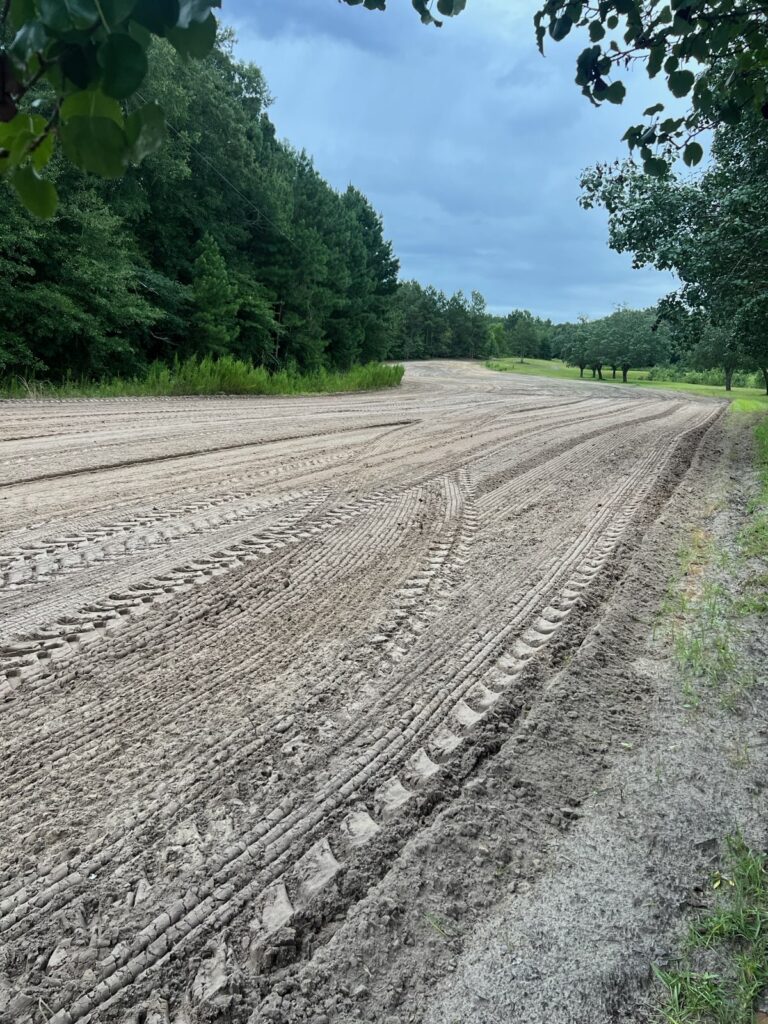
Planting a wildlife food plot for deer is an essential strategy that has transformed my hunting experience, much like it has for many dedicated hunters. A meticulously planned and well-maintained food plot doesn’t just attract deer to your land; it nourishes them, promoting healthier herds and more robust bucks. As someone who spends countless hours in the field, I’ve witnessed firsthand how a diverse, nutrient-rich food plot can make all the difference during hunting season.
Whether you’re aiming to provide critical nutrition during the harsh winter months or looking to draw deer in during the early fall, the right food plot mix can create a thriving habitat that supports wildlife year-round. In this comprehensive guide, we’ll delve into every aspect of planting a successful food plot for deer, from choosing the best clover varieties to understanding seasonal strategies for maximum impact. Whether you’re a seasoned hunter or just getting started, these insights will help you establish a food plot that not only enhances your hunting opportunities but also contributes to the health and sustainability of the local deer population. Let’s get started on transforming your hunting grounds into a wildlife haven.
Why Plant a Food Plot for Deer?
A well-planned food plot serves multiple purposes:
- Attracts Deer: A well-planned food plot serves as a reliable food source, drawing deer to your property and encouraging them to stay. This increases your chances of observing and hunting deer, making your land a prime location during hunting season.
- Nutritional Support: Food plots provide essential nutrients that help deer thrive, especially during critical times like late winter and early spring when natural forage is scarce. A variety of plants, including clover, brassicas, and winter peas, offer high protein and energy, promoting overall deer health and supporting antler growth in bucks.
- Hunting Advantage: Strategically placed food plots can significantly improve your hunting success. By positioning plots near bedding areas or along travel corridors, you can influence deer movement and create predictable patterns that make hunting more effective and enjoyable.
- Wildlife Conservation: Food plots contribute to the overall health of the local ecosystem. They support not only deer but also other wildlife, including turkeys, rabbits, and birds. By providing a consistent food source, you help maintain a balanced and thriving wildlife population.
- Habitat Improvement: Beyond feeding deer, food plots can improve soil health and biodiversity. Rotating crops and using no-till methods enhance soil structure, reduce erosion, and promote the growth of beneficial microorganisms.
- Year-Round Benefits: Food plots offer benefits throughout the year. Summer plots provide essential nutrition during the growing season, while fall and winter plots ensure deer have enough food to sustain them through colder months. This year-round support helps deer populations remain strong and healthy.
Planning Your Food Plot
1. Assess Your Land
Before you start planting, take a close look at your land. Consider factors such as soil quality, sunlight exposure, drainage, and water availability. Conduct a soil test to determine the pH and nutrient levels, which will guide your seed selection and soil preparation. Most soil analysis can be conducted at your local extension office.
2. Choose the Right Location
Select a location that receives at least 4-6 hours of sunlight per day. Avoid areas with poor drainage or heavy shade. The ideal spot is near bedding areas or travel corridors to maximize deer traffic. Also, areas where habitat diversity is present will make a good place to plant.
3. Define Your Goals
What do you want to achieve with your food plot? Are you looking to attract deer during a specific season, or do you want a year-round food source? Your goals will influence the type of seeds you choose and the plot’s design.
4. Determine Plot Size and ShapeDetermine Plot Size and Shape
Smaller plots (1-2 acres) are easier to manage and can still be highly effective. Irregular shapes with edges and corners can be more appealing to deer than large, open areas.
Selecting the Right Seed Mix
Choosing the right seed mix is crucial for the success of your food plot. Here are some popular options:
Clover for Deer
Clover is a favorite among deer and provides excellent forage throughout the year. It’s also easy to establish and maintain.
- Best Clover to Plant for Deer: Look for varieties like Ladino, White Dutch, and Crimson clover. These types are hardy and provide high nutritional value.
- Clover Food Plot Seed: Opt for a mix that suits your soil type and climate.
Winter Rye for Deer
Winter rye is an excellent choice for late-season plots. It grows quickly and provides a nutritious food source when other plants are dormant.
Winter Peas for Deer
Winter peas are high in protein and are particularly attractive to deer during the fall and winter months. They can be planted alone or mixed with other seeds.
Brassica Food Plot
Brassicas, such as turnips and radishes, are another great option for late-season plots. They provide high-energy forage and are easy to grow.
Buck Forage Oats
Buck forage oats are specifically designed for deer. They are highly palatable and provide excellent nutrition during the fall and winter.
Planting Your Food Plot
1. Prepare the Soil
Start by clearing the area of any existing vegetation. Use a herbicide if necessary, and wait for it to take effect. Once the area is clear, till the soil to a depth of 4-6 inches. Incorporate lime and fertilizer based on your soil test results to adjust the pH and nutrient levels.
2. Select the Planting Method
There are several planting methods to choose from:
- Traditional Tilling: This method involves tilling the soil and then broadcasting or drilling the seeds.
- No-Till: This method involves planting seeds directly into the soil without tilling. It’s less disruptive to the soil structure.
- Throw and Grow Food Plot: This method is suitable for small, remote areas. Simply clear the area, scatter the seeds, and let nature do the rest.
3. Plant the Seeds
You may follow the recommended application rate on the seed bag, but I want a thick stand of whatever I’m planting, so I usually double the rate. Broadcast the seeds evenly across the plot, then use a roller, drag harrow, or a cultipacker to ensure good seed-to-soil contact. It’s always a good idea to watch the weather and do your best to plant when rain is in the forecast, but you may have to water the plot if necessary to help the seeds germinate.
Maintaining Your Food Plot
1. Monitor Growth
Regularly check your food plot for signs of growth and health. Look for any signs of pest infestations or nutrient deficiencies.
2. Weed Control
Keep weeds in check to ensure they don’t outcompete your food plot plants. Use herbicides or mechanical methods as needed. Depending on your seed selection, some sellers offer round-up ready varieties.
3. Fertilization
Apply additional fertilizer as needed based on the growth and health of your plants. Follow the recommendations from your soil test. I can tell you from experience that it’s pretty difficult to over fertilize corn of any variety. I typically fertilize my corn at planting then at a minimum one additional time when it’s about 18″ tall.
4. Mowing
For perennial plots like clover, mowing can help maintain plant health and encourage new growth. Mow at a height of 6-8 inches to keep the plot productive.
5. Irrigation
Ensure your food plot receives adequate water, especially during dry periods. Irrigation may be necessary to keep the plants thriving.
Seasonal Food Plot Strategies
Spring and Summer
During the spring and summer, focus on establishing annuals like clover and brassicas. These plants provide essential nutrition during the growing season and help build a strong foundation for the fall.
- Summer Food Plots for Deer: Plant warm-season annuals like soybeans, cowpeas, and sunflowers. These provide high protein and attract deer during the summer months.
Fall and Winter
In the fall, switch to planting cool-season annuals like winter rye, winter peas, and brassicas. These plants are critical for providing nutrition during the colder months.
- Best Food Plot for Deer: A mix of winter rye, brassicas, and winter peas can create a diverse and nutritious food plot that attracts deer throughout the fall and winter.
Tips for Success
1. Start Small
If you’re new to planting food plots, start with a small area. This will make it easier to manage and monitor the plot’s success.
2. Be Patient
Food plots take time to establish. Don’t be discouraged if you don’t see immediate results. With proper care, your plot will become a valuable asset over time.
3. Rotate Crops
Rotating crops helps maintain soil health and prevents disease build-up. Alternate between different types of plants each season.
4. Use High-Quality Seeds
Invest in high-quality seeds from reputable suppliers. This ensures better germination rates and healthier plants.
5. Keep Records
Maintain a journal of your food plot activities. Record what you planted, when you planted it, and any observations about the plot’s growth and health.
Conclusion
Planting a food plot for deer is a rewarding endeavor that can enhance your hunting experience and support local wildlife. By carefully selecting the right seed mix, preparing the soil, and maintaining the plot, you’ll create a thriving food source that attracts deer year-round. Whether you’re using clover for deer, winter rye for deer, or any other seed mix, the key is to plan ahead, stay patient, and adapt your strategies based on the results you see.
Additional Resources
To further enhance your knowledge and skills in creating successful food plots for deer, consider exploring the following resources:
- Whitetail Institute: Food Plot Planning
- Deer Creek Seed: Food Plot Mixes
- Whitetails Unlimited: Conservation and Habitat
By utilizing these resources, you can stay updated on the latest techniques, seed varieties, and best practices in the world of deer food plots. Whether you’re looking for clover food plot seed, brassica food plot options, or the best deer food for different seasons, these websites offer valuable insights and products to help you achieve your goals.
FAQ
Q: What is the best clover for deer? A: The best clover for deer includes varieties like Ladino, White Dutch, and Crimson clover. These types are known for their hardiness and high nutritional value.
Q: Can I plant a food plot without tilling the soil? A: Yes, you can use the no-till or throw and grow food plot methods. These methods are less disruptive to the soil and can be effective in certain conditions.
Q: How often should I fertilize my food plot? A: Fertilization frequency depends on the soil test results and the growth of your plants. Generally, you should fertilize at planting and then as needed based on the plant’s health.
Q: What are some good summer food plots for deer? A: Good summer food plots for deer include warm-season annuals like soybeans, cowpeas, and sunflowers. These plants provide high protein and attract deer during the summer months.
Q: How do I keep weeds out of my food plot? A: Weed control involves regular monitoring, using herbicides, and mechanical methods like mowing or hand-pulling. Keeping weeds in check ensures that your food plot plants thrive without competition.
By addressing these common questions and following the steps outlined in this guide, you’ll be well on your way to creating a successful and productive food plot for deer.
